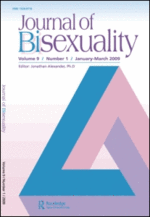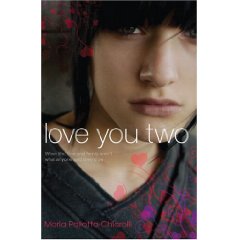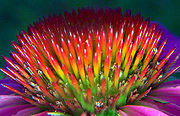“when we see things in [a Gaian] perspective, it becomes very easy to understand the basic principle of holistic health. If an individual is a cell in a superorganism, his or her disease cannot be a foreign agent, for all agents are part of the larger entity of which that individual is an element”
The periodo lectivo is approaching and G tells me her classes are starting again. She was at the school office and found it plastered with notices discouraging people from kissing on the cheek and shaking hands.
“It’s the swine flu” she told me on the phone, “nobody wants to be held responsible for someone getting it, and so they post those disclaimers so that if you do get it, you can’t blame them.”
“But people are getting the swine flu, G,” I replied, “they’re even dying from it, haven’t you heard?”
“Of course I have” she said, “but do you think that those disclaimers really help?”
“Well, what’s wrong with reminding people to wash their hands, keep from getting too close to someone who could be contagious? I got friends who almost got it, it was scary, loads of tests, anxiety, we all got a bit nervous and wary. It was hard to keep one’s cool. But nothing really bad, it turned out everyone was ok. How about you? Anybody you know?”
“Oh yeah, my massage therapist got it, she had to quit her job. She was abject. She got depressed. She called me and I spent hours with her, then I went out and got a bottle of Echinacea for her.”
“Your massage therapist? The one who calls you mi abuela postiza, my pretend grandma?”
“Yeah, and imagine, a week earlier I had a two hour massage with her. As soon as I get into the parlor, we hug and she tells in how much pain she is. I sit her on the table and ask her to show me where it hurts. Then I work and work and work on her, the neck, the chest, the shoulders, the back.”
“You mean you start massaging her?”
“Yeah, what else? She was sick, she needed the help.”
“But this was your massage time, no?”
“It was, and there I am, giving a massage to my massage therapist. Getting her well enough that she can do me, eventually. And telling her not to worry, that it’s just fine–I had offered to exchange with her many times because I knew she was overworking.”
“OMG! What a situation. And then she gets the swine flu?”
“Well, I found that out later. Meanwhile, I didn’t get anything–so no harm done. And when I hear she has it, I go out and get Echinacea for her. A little bottle.”
“Oh, yeah, I got that too. A special dosage, even though this time, with the swine flu being so potent, I didn’t really have a lot of trust in these flimsy remedies.”
“Flimsy? You know we’ve been taking it for years now. Once in a while–just so enough of it is in circulation that the immune system can respond before anything happens, before any microbe has its way.”
“Don’t tell me that you have such faith in it. I take it too, but it’s more as a way to touch wood for good luck–a superstition if you want.”
“Really? But don’t you know that it’s indigenous knowledge. Echinacea comes from the center of a daisy, it’s the powder found in there. It has been used for immune system strength by generation after generation. This has been known for centuries. It’s time-tested knowledge. Better than laboratory, because there’s so much history of it having been effective.”
“Nobody knows why though.”
“If you consider that a problem.”
“Could be a problem. Perhaps one could run some experiment as to why.”
“Or, those ultra-scientific all-knowing health authorities could simply collect data from people who regularly take Echinacea, and find out how rare the flu is among them compared to those who don’t.”
“Are you sure that’s so?”
“It is well known in the holistic health community. Everybody knows and takes it. And take a look at them—I mean people who do holistic health–they don’t call the doctor every day, they’re not afraid to get sick, they often radiate health and resist pathogens much better.”
“Yeah, I must admit their lives are not as medicalized as those of some other people I know. In any event, it sure would be worth trying to get some data. I know I don’t get the flu often. How about you, G?”
“I used to get it. Before Echinacea. When I used antibiotics. Now I don’t. And I use all kinds of remedies–there’s one for every situation, once you get the knack of it. And my daughter. A flu after a flu after a flu. Lots of antibiotics. Until she was ready to go to college. And then I said, ‘what’s the point of sending her to college if she’s always in bed?’ So we stopped antibiotics, and did Propolis topically to quench throat infections, and Echinacea when she was well, as a preventative. It was quite effective. She graduated on time and with good grades!”
“But then, why do you think people still do antibiotics so often?”
“They’re afraid, they’ve been taught not to trust their immune system. They’re used to depend on meds. Sometimes it’s as banal as the taste of these remedies. People are used to pills. A potion–with its own taste and flavor–scares them, it appears medieval to them, a witch’s brew.”
Giggling over the phone . . . “A witch’s brew” we giggle together.
“And witch’s brew it is,” I continue, “when you think about it, the only evidence being experience, tradition, indigenous knowledge, historical evidence–opposite of what modern science understands.”
“And who’s short of understanding? Indigenous knowledge works. Just because something’s modern doesn’t mean it’s good.”
“Take it easy, G. You tend to get carried away. Allopathic medicine is not worth bumping heads against. You never know.”
“Of course my dear. You know my weakness. An accident, a trauma, a birth defect, a sudden outbreak: allopathic medicine is much faster, has an immediate effect. Take my cousin’s club foot that she was born with,” G said. “They open up, they switch the tendon to the right position, and the baby’s gonna grow with a regular foot, like everybody else. Can you imagine not having access to that? Having to watch your baby grow up with a twisted, upside-down foot just because you cannot get surgery?”
“Oh my gosh, that would be horrible, G. Good to hear that surgery went well. Doesn’t matter how many massages, manipulations . . . ”
“Yeah, and doesn’t mean that applies to all situations. Sometimes the effects of that kind of aggressive interventions are more than secondary. Sometimes they override the benefit. Remedies are much more gradual and benign, with more positive and durable effects.”
“And how about those images in the office. Were you telling me how you they made you feel?”
“They made me feel terrible. Here in the Caribbean people touch when they shake hands and kiss each other on the cheek, once. It’s a bonding ritual that is good for one’s sense of connectedness, immunity and health. Now, with the excuse of the swine flu, public health officers are trying to take that away. Those posters made me feel depressed. And that’s bad for one’s immune system. I’m sure I’m not alone. Others probably feel their social manners are being criminalized in some ways.”
“Oh, one kiss you said? It’s three in France and two in Italy, correct?”
“Yes,” said G.
“I wonder what’s being posted there?” I asked.
“I bet not much” she replied. “I’m just speculating, yet I can’t imagine the French or Italian government criminalizing affectionate behavior–what has been considered good social manners for centuries. But you never know. Have no direct reports at this point.”
“Have you heard any comments? From colleagues at the university, I mean, people you know?”
“Not really, I’ve seen people pull out these little bottles of hand disinfectant and rubbing their hands with it. They pour it on mine as well, and I comply. It feels clean, has a strange smell. I abstain from getting my own. And you know, as I watch all this, as I hear that people are dying from the swine flu, that it is very serious, that it was almost fatal to somebody as close as my pretend granddaughter, I get really upset. First of all, the flu could not be so serious if the world was in better heath, I mean if the biota was stronger and more whole, if the web of life where we are embedded was more wholesome and healthier. And then, for {a9d64f7890d157e71e6efcce19e215a5f853c7f4151cde0b7bf7aada464173f6}^&**’s sakes, at this time when the threat is really serious, what would public health authorities lose from making some surprising declarations.”
“Declarations like what?” I ask.
“You know, like, that they really don’t know why, but they hear reports that Echinacea is very effective, that people in the holistic health collective have something to offer, and that they, the authorities–those in charge of public health–are willing to break a lance. That they are willing to make fools of themselves and endorse a witch’s brew, put their weight behind it, so the public at large–I mean those who commonly believe in authority–can finally benefit.”
“Arrgh, what a scene you’re making, G. Now suppose the surgeon general recommended Echinacea on CNN tomorrow, what do you think would happen? Wouldn’t everybody think she’s gone crazy? Would your average Joe who watches TV all day go and get the remedy? Or would this rather end up causing a big ruckus in the high spheres–with her being fired, and some pharmaceutical company declaring her insane and locking her up?”
“Well, I guess you have a point. And yet, they talk about health care reform. What kind of reform? Nothing is going to change if people don’t start to think differently about health. Look at this example. Many people have died of the swine flu. Something as cheap and accessible as Echinacea could have saved some of them. And yet, of those in authority, nobody said a word. I did buy Echinacea for my pretend granddaughter. It’s here on my table. I invited her to come and get it. Hopefully she will, when she’s better and before she gets sick again. But you know, had she heard it in the media, she’d be here already. I mean, isn’t it unconscionable that they haven’t told her?”
“I can see your point. The stakes were high this time. And it’s always on us–we who practice holistic health–to spread the word. And we have no authority. As good old Lillian Hellman would have said, ‘I’d rather make the attempt and fail than fail to make the attempt’.”
“Thank you dear. It’s good to talk to you. Hopefully, it will happen. And meanwhile we have SexGenderBody blog where our voice can be heard.”
Note: This is a fictional dialog and its contents do not constitute any kind of advice. Each person is different and responses to remedies vary accordingly.
End of G Tale # 2
Please note: The time references in some of the G Tales are off because they first appeared in SexGenderBody
Reprinted here with thanks to Arvan Reese
http://polyplanet.blogspot.com



